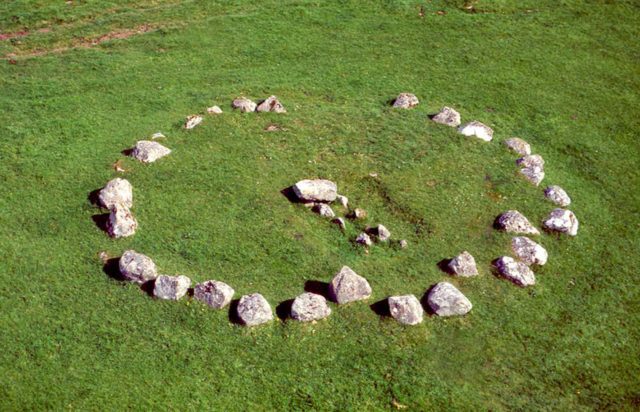Ballymote Castle is a large rectangular keepless castle, built around 1300, on the outskirts of Ballymote, County Sligo. This area was known historically as Átha Cliath an Chorainn, which roughly translates as The Ford of the Hurdles of Corann. It is the last of the Norman castles in Connacht. It was probably built in order to protect the newly won possessions of Richard Óg de Burgh, 2nd Earl of Ulster (also known as the Red Earl), in County Sligo.
The castle changed hands many times since construction. It was captured by the O’Connors of Sligo in 1317, but was taken by the Mac Diarmada, during the course of local struggles, in 1347. By 1381 it had passed to the McDonaghs.
Although owned by Tadhg MacDermot, one of the last of the Kings of Moylurg in 1561, it appears to have passed to the O’Connor Sligo by 1571, at which time he surrendered the castle and had it regranted to him by James I of England. In 1577, the castle fell into English hands for a short period and then more permanently in 1584, when it was taken by the Governor of Connacht Richard Bingham. A lack of occupation levels implies that the building was virtually abandoned during the above period (from 1317 to 1584).
The O’Connors, O’Hartes and O’Dowds sacked the castle in 1588. The English surrendered it in 1598 to the MacDonaghs who sold it shortly afterwards to Red Hugh O’Donnell (one source says he bought it for £400 and 300 cows). It was from here that Red Hugh O’Donnell marched to the disastrous Battle of Kinsale in 1601. When the O’ Donnells surrendered it to the English in 1602, it was already in a bad state of repair. In 1633, the Taaffes owned it for a short time, but had to surrender it again to the English Parliamentary forces in 1652. In the Williamite wars the castle was held by Captain Terence MacDonagh for King James II, but he had to surrender it to Lord Granard in the face of an artillery attack in 1690. Soon afterwards the fortifications were made harmless, the moat was filled up and the castle fell into ruins.








